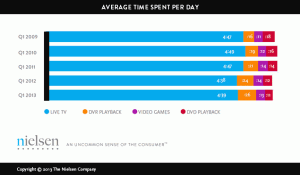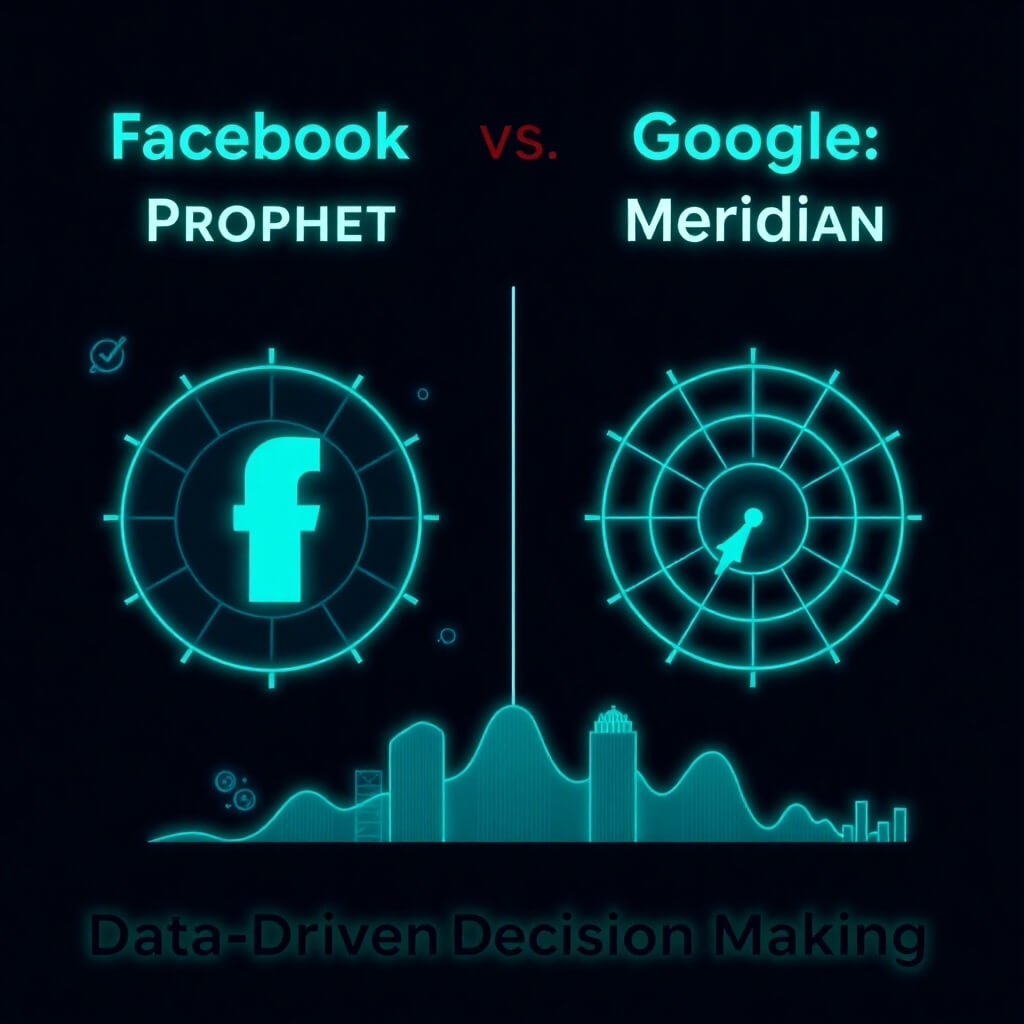Media consumption in the living room is a new battleground for many services vying for those eyes and ears. Until recently, most media was provided via standard cable operators, or terrestrial radio, but things are evolving quickly. With digital music, personal collections grew exponentially, and people could play files through an iPod dock with a speaker, or by plugging into a traditional audio receiver. Recorded video became more popular as DVD and eventually Blue Ray became more ubiquitous.
Now, the battle has been expanded and a wide array of companies with products and services across industries are competing for those consumers when they are paying attention most- in their living rooms. As a result, traditional TV viewing continues to command less and less of our time, particularly across younger demographics as a recent Nielsen study indicates:
Consumers have more choices than ever for accessing different types of media at home. In addition to traditional TV and radio, consumers can tap into new sources of content through web enables services. Traditional TV’s share of our time will continue to decline as consumers try out things like:
- Expanded cable services with on demand video and other web-based content
- Home Theater PCs connected to traditional TV sets
- Media delivered via stand-along boxes like Roku box or Apple TV
- Media delivered via current and next generation game consoles
- New TV sets with web features baked in like Samsung’s Smart TV
- Plug and play media sticks like Roku’s Streaming Stick and Google’s newly released $35 Chromecast
With most of these options, users can access basic web services for things like weather, traffic, and social networks. In many cases, users can also access apps for services like Netflix, Hulu, and other content aggregators and streaming video providers. Right now in my home, I probably have more than a half dozen different methods to access Facebook or Netflix from my couch.
As the battle for the living room matures, it is likely consumers will see some consolidations in options for consumption. One thing is for sure however- traditional media like live TV will continue to see its share of the pie decline, as time shifting and web based content continue to expand.






